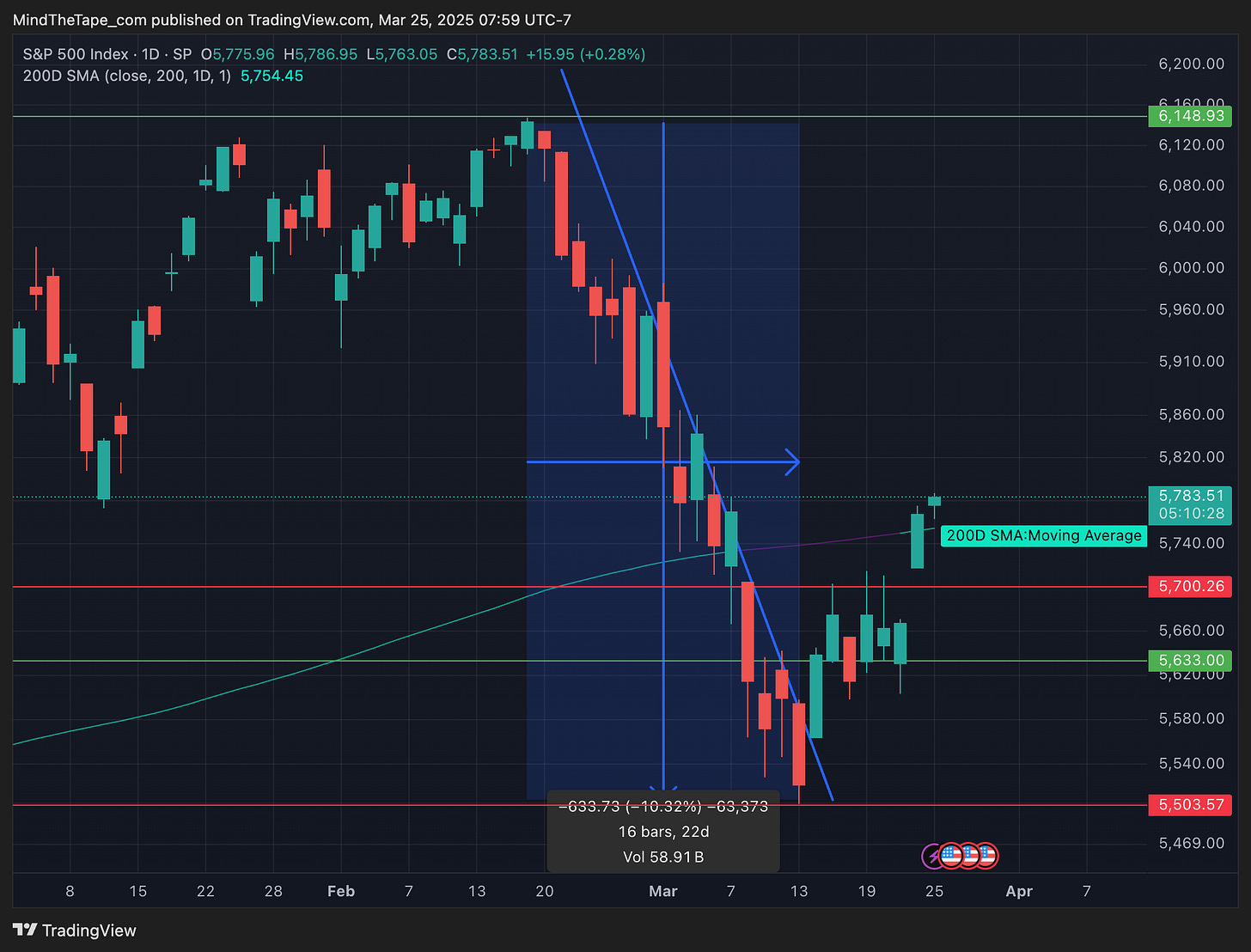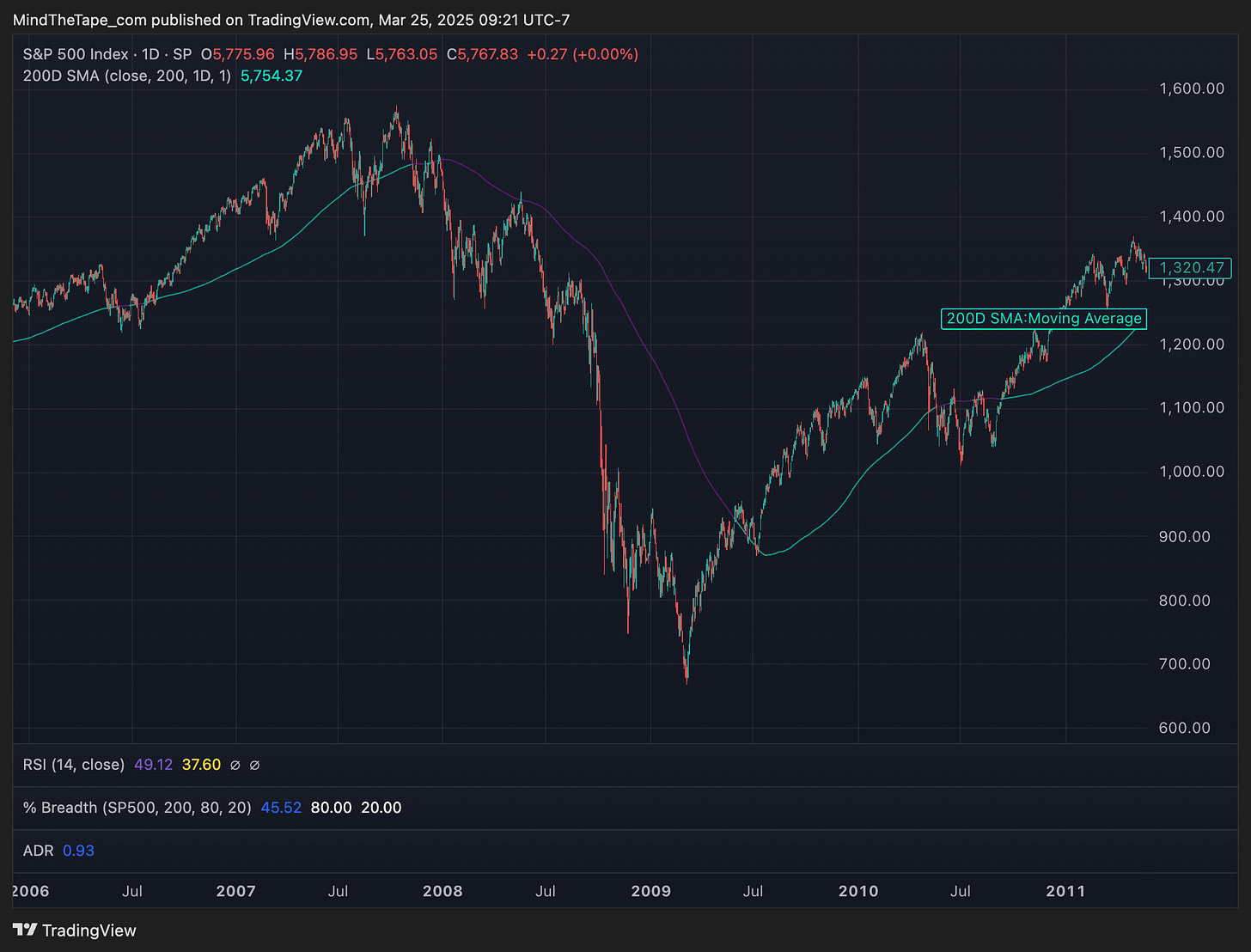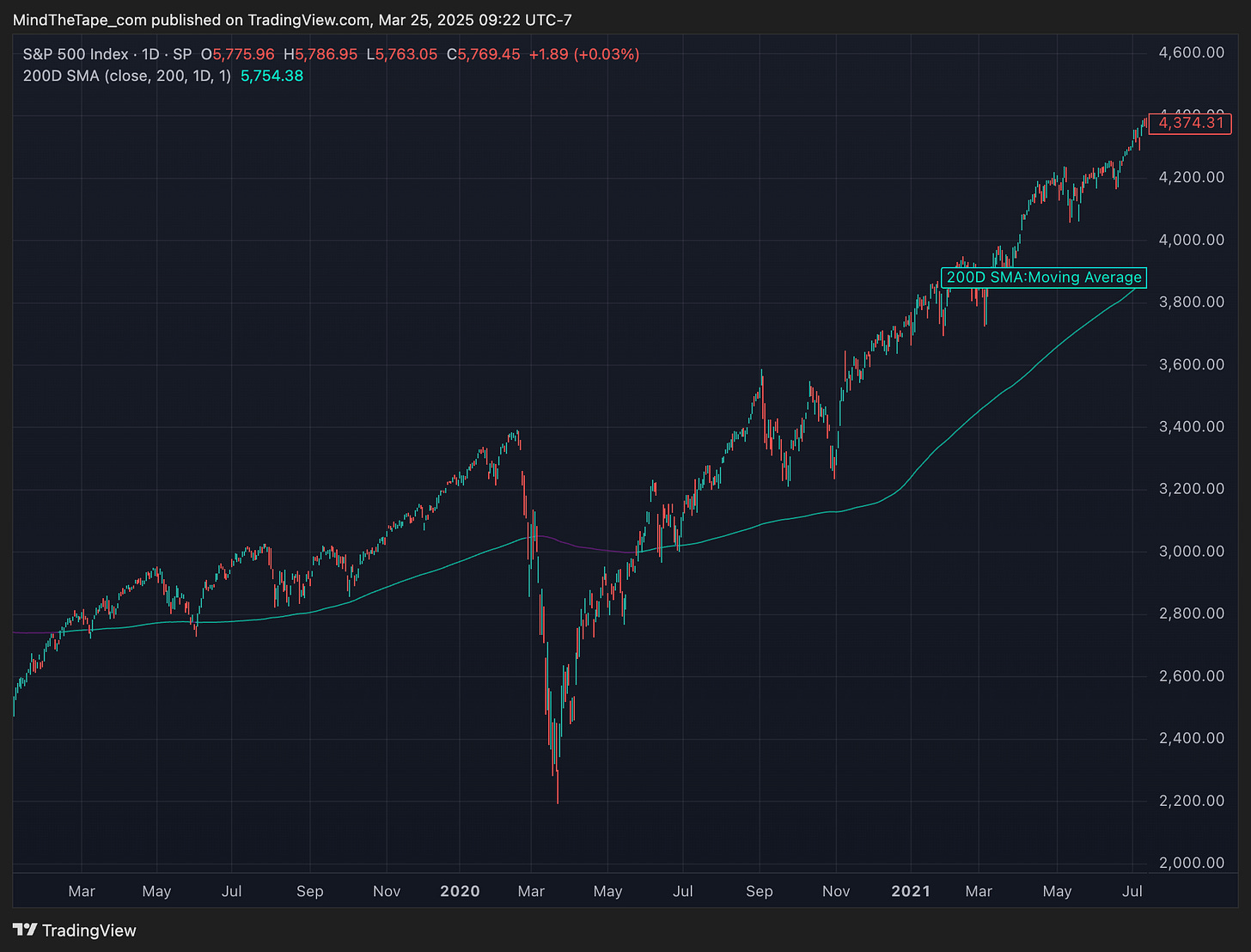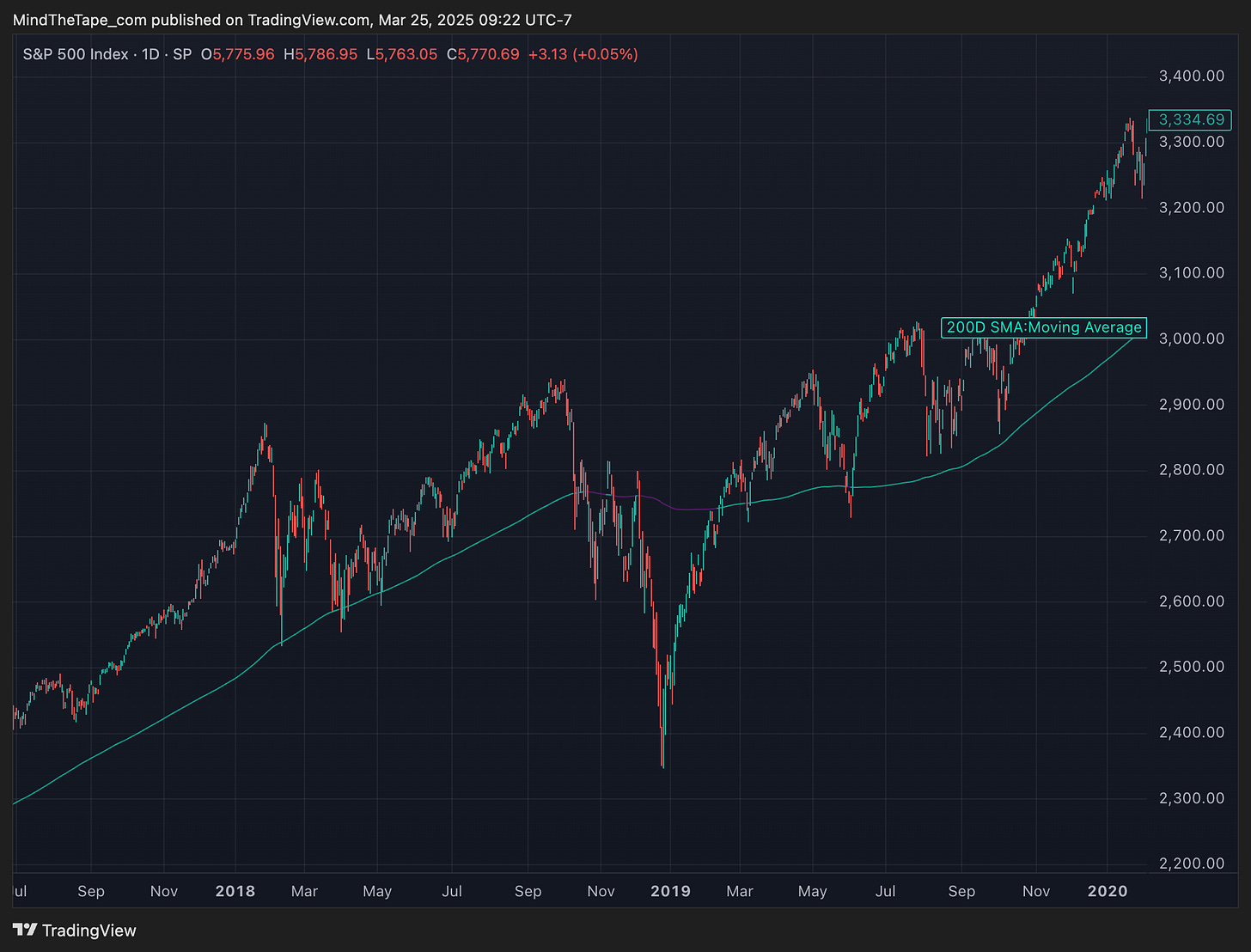What the 200-day moving average tells us about today's market...
Should we be bullish or is it too early to get back in the pool?
Author’s Note: I will continue releasing free content where I can provide value to everyone. Posts will include premium content for paid subscribers at the end of emails or as separate write-ups. Free content will focus on macro views, whereas the paid content will focus more on the tactical trades I’m making.
Serious traders or investors should join Premium to get the best, most timely information.
“Nothing good happens below the 200-day moving average”
-Paul Tudor Jones
The S&P 500 index reclaimed its 200-day moving average yesterday, a significant step towards resuming the bull market.
But how significant? To find out, I looked at some historical examples of 200-day reclaims and their implications for asset markets going forward.
Broadly, I identified three different categories of reclaims, which all sent different signals. I’ll talk about each separately.
Strong Reclaims in Extended Bear Markets
Think of this scenario as the market finally waking up after a long hibernation. We're talking about situations where the S&P has spent several months (often over half a year) deep underwater—typically experiencing a drop of 20% or more.
A perfect example is the recovery following the brutal 2008 financial crisis. After months of heavy selling and negative sentiment, in March-April 2009, the market decisively reclaimed its 200-DMA.
What happened next? Historically, these moments kickstart influential bull markets. On average, returns over the following year are impressive, often landing in the 13-17% range. These reclaims also tended to herald extended bear markets with out-sized returns continuing for years.
The takeaway here is clear: when the market finally breaks out of an extended bear period and reclaims its long-term trend line, it’s typically signaling a lasting recovery with strong and durable gains ahead. Our analysis considered multiple historical instances, including notable examples from 1974, 1982, and 2009.
High-Momentum Reclaims
Imagine the market bouncing back with serious energy—a swift and powerful move upward. This happens when the S&P climbs above its 200-DMA after a significant downturn and surges strongly, often over 10% above that critical trend line. A classic example is the market recovery in the summer of 2020 following the COVID-19 crash. Markets didn’t just reclaim the 200-DMA; they powered decisively above it with impressive momentum.
Historical data also includes similar high-momentum rebounds analyzed from rapid recoveries, such as the post-1987 crash recovery and the sharp bounce back following the severe downturn in 1998.
Studies confirm that these scenarios are consistently bullish, with average one-year returns in the ~20% range and high historical win rates (around 90%). The takeaway is clear: a high-momentum reclaim isn’t just an overreaction—it typically signals sustained strength and tends to be associated with lower volatility going forward.
Short and Mild Correction Reclaims
Think of this as the market taking a brief pause or breather. These situations involve quick pullbacks, usually around 10–15%, lasting roughly one month, before quickly reclaiming the 200-DMA. A good historical example is the correction in early 2018, when the market dipped about 10% between February and March but quickly bounced back and reclaimed its 200-DMA by April, returning ~15% from the lows.
Historically, these scenarios typically produce moderately positive outcomes, with average returns in the ~10% range over the following year. They tend to have lower volatility than deeper downturns, signaling a normal bull-market correction rather than a significant shift in trend. Analysis of several such corrections—including those from 2015, early 2018, and mid-2019—suggests these events provide solid entry points without extreme upside.
Our Current Situation
Keep reading with a 7-day free trial
Subscribe to Mind The Tape to keep reading this post and get 7 days of free access to the full post archives.





